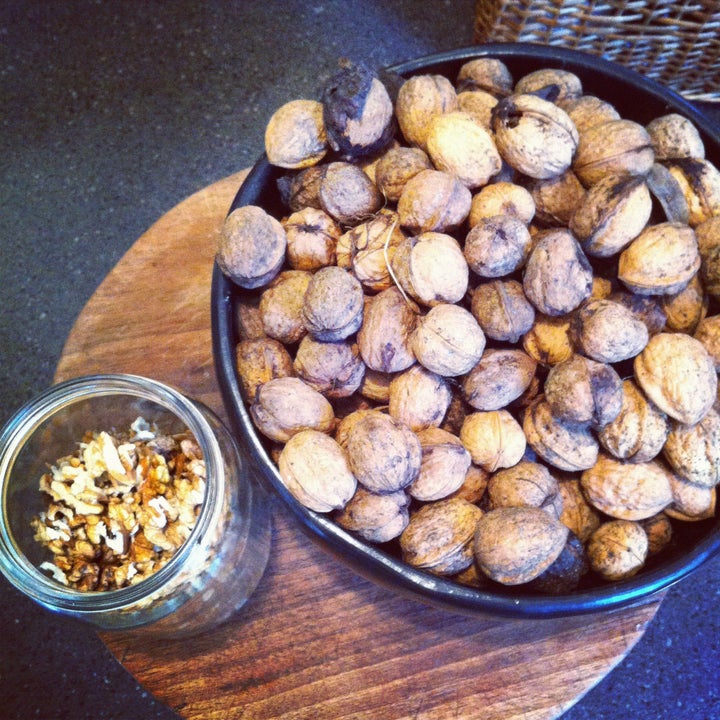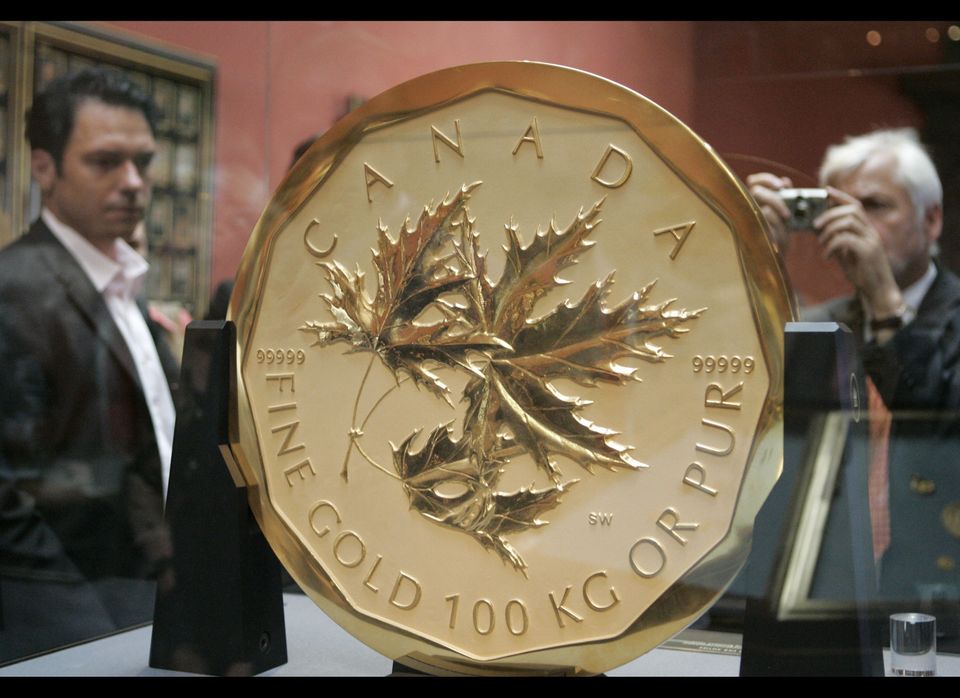BEIJING, Aug 28 (Reuters) - China is trying hard to revive interest in its ailing stock market, but some investors are instead shelling out big money on an asset they can hold in the palms of their hands - walnuts.
With more traditional investments like stocks and property offering only small, or sometimes negative, returns over the last few years, a market in so-called "cultural playthings" has sprouted up, sending prices for large walnuts, for instance, into the tens of thousands of dollars.
Once the toys of China's imperial court, the walnuts -- which when rotated in one's palm are thought to stimulate blood circulation -- are making a comeback among the wealthy, some of whom see them as not only a place to put their cash, but as a distinctly Chinese status symbol.
The bigger, older and more symmetrical, the better, says collector Kou Baojun in Beijing, who owns over 30 pairs of walnuts, most of which are over a century old and have taken on a reddish shine from years of polishing in the palm.
"Look how well these have aged. Playing with these kinds of walnuts isn't for ordinary people," Kou said.
Interest from collectors like Kou has made walnuts big business for merchants like Hu Zhenyuan, who buys entire trees from farmers ahead of the harvest to supply his shop in Beijing.
"Walnut investments go up every year. A pair of walnuts at 350 yuan ($55) 10 years ago can sell for 3,500 yuan or even 20,000 or 30,000 yuan," Hu said.
The walnut craze peaked in 2010, as Beijing's steps to put the brakes on property market speculation left few places for the wealthy to park their money.
But with the stock market now down by nearly 40 percent over the past three years and few options for investing overseas, the market for walnuts and other trinkets, such as gourds to house crickets, continues to thrive. One pair for sale on a popular walnut trading website is listed at over $31,000.
And walnuts are not alone.
In 2006, a frenzy of speculation drove up the price of pu'er tea, a fermented variety from southwestern Yunnan province, to astronomical levels. In 2009, garlic prices soared as punters moved on to more pungent ground.
More recently, there has been a surge of interest in traditional mahogany furniture.
"There are a lot of people in China with disposable savings who at the moment have very poor investment options," said Mark Williams, an economist with Capital Economics in London.
"They look at the property market where there are concerns about prices. The equity market has gone nowhere for years. Bank deposits don't do anything for you. That fuels this speculative activity."
China's securities regulator is trying to change that, seeking to entice investors back to the stock market by cracking down on insider trading and other wrongdoing, cutting trading transaction fees and pushing companies to pay out higher dividends so that investors can expect more regular returns.
Many analysts say that winning them over will take time, as many lost large sums of money in past market slumps and remain sceptical about whether the stock market is stacked against individual investors -- and even whether the fund managers they entrust their money to act in their best interests.
Chi Rui, who set up a walnut information website nearly 10 years ago, suspects that Beijing actually doesn't mind money going into products like walnuts because that way it at least does not drive up food prices, as the recent garlic bubble did.
"The government has been hoping for more money to flow into traditional collectables because their price rise doesn't affect politics or normal people's lives," Chi said.
Our 2024 Coverage Needs You
It's Another Trump-Biden Showdown — And We Need Your Help
The Future Of Democracy Is At Stake
Our 2024 Coverage Needs You
Your Loyalty Means The World To Us
As Americans head to the polls in 2024, the very future of our country is at stake. At HuffPost, we believe that a free press is critical to creating well-informed voters. That's why our journalism is free for everyone, even though other newsrooms retreat behind expensive paywalls.
Our journalists will continue to cover the twists and turns during this historic presidential election. With your help, we'll bring you hard-hitting investigations, well-researched analysis and timely takes you can't find elsewhere. Reporting in this current political climate is a responsibility we do not take lightly, and we thank you for your support.
Contribute as little as $2 to keep our news free for all.
Can't afford to donate? Support HuffPost by creating a free account and log in while you read.
The 2024 election is heating up, and women's rights, health care, voting rights, and the very future of democracy are all at stake. Donald Trump will face Joe Biden in the most consequential vote of our time. And HuffPost will be there, covering every twist and turn. America's future hangs in the balance. Would you consider contributing to support our journalism and keep it free for all during this critical season?
HuffPost believes news should be accessible to everyone, regardless of their ability to pay for it. We rely on readers like you to help fund our work. Any contribution you can make — even as little as $2 — goes directly toward supporting the impactful journalism that we will continue to produce this year. Thank you for being part of our story.
Can't afford to donate? Support HuffPost by creating a free account and log in while you read.
It's official: Donald Trump will face Joe Biden this fall in the presidential election. As we face the most consequential presidential election of our time, HuffPost is committed to bringing you up-to-date, accurate news about the 2024 race. While other outlets have retreated behind paywalls, you can trust our news will stay free.
But we can't do it without your help. Reader funding is one of the key ways we support our newsroom. Would you consider making a donation to help fund our news during this critical time? Your contributions are vital to supporting a free press.
Contribute as little as $2 to keep our journalism free and accessible to all.
Can't afford to donate? Support HuffPost by creating a free account and log in while you read.
As Americans head to the polls in 2024, the very future of our country is at stake. At HuffPost, we believe that a free press is critical to creating well-informed voters. That's why our journalism is free for everyone, even though other newsrooms retreat behind expensive paywalls.
Our journalists will continue to cover the twists and turns during this historic presidential election. With your help, we'll bring you hard-hitting investigations, well-researched analysis and timely takes you can't find elsewhere. Reporting in this current political climate is a responsibility we do not take lightly, and we thank you for your support.
Contribute as little as $2 to keep our news free for all.
Can't afford to donate? Support HuffPost by creating a free account and log in while you read.
Dear HuffPost Reader
Thank you for your past contribution to HuffPost. We are sincerely grateful for readers like you who help us ensure that we can keep our journalism free for everyone.
The stakes are high this year, and our 2024 coverage could use continued support. Would you consider becoming a regular HuffPost contributor?
Dear HuffPost Reader
Thank you for your past contribution to HuffPost. We are sincerely grateful for readers like you who help us ensure that we can keep our journalism free for everyone.
The stakes are high this year, and our 2024 coverage could use continued support. If circumstances have changed since you last contributed, we hope you'll consider contributing to HuffPost once more.
Already contributed? Log in to hide these messages.


